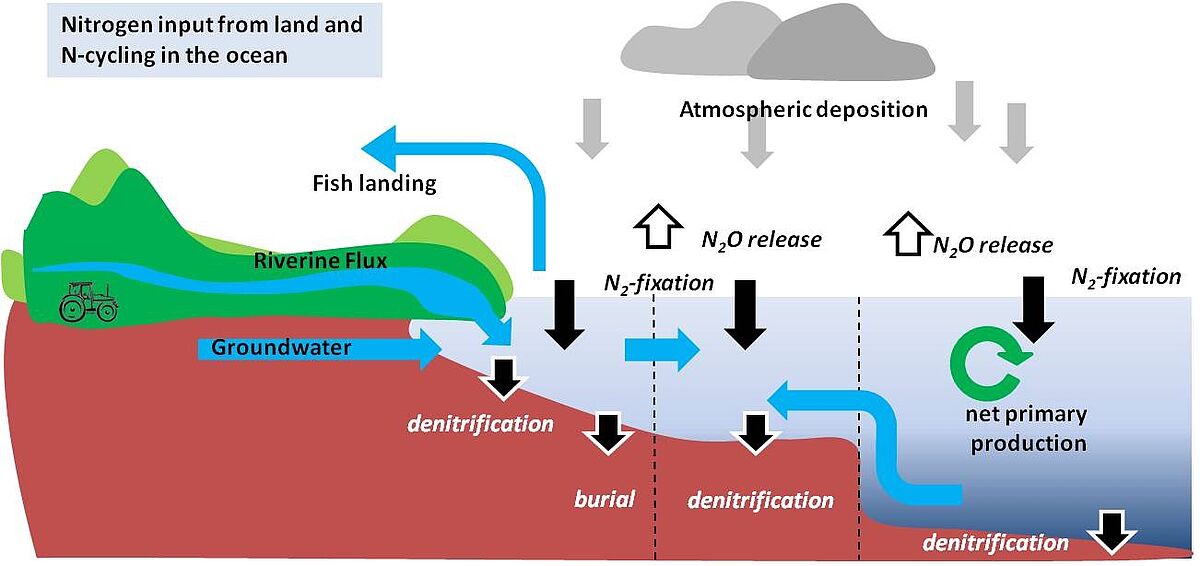Research Fields
Hydrodynamic Processes
The water dynamics along and across the coastline form the basis for solute and particle transport within the coastal peatland and the adjacent coastal waters. Depending on the hydraulic gradient and flux properties of the prevailing porous strata, submarine groundwater discharge as well as salt water intrusion or flooding may be expected. We will characterise the interactions between sea and groundwater employing numerical simulations of the seawater current at larger spatial scales (Topic H3) and of the groundwater flux within the coastal catchment (Topic H1). On the long run, both model approaches shall be combined. The model analysis is based on experimental data of the groundwater dynamic and also on a flow path analysis with natural tracers (18O; Topic G1). The hydraulic properties of the peat overlying the groundwater aquifer will be investigated in Topic H2. Flow and transport properties of peat soils will be studied experimentally in field and lab tests. Obtained data will be subjected to model evaluation employing multi-modal approaches. The formation of small-scale flux fields in shallow waters as a function of sea floor morphology will be studied experimentally in a laboratory set-up (Topic H4). In this topic local currents and turbulent mixing are the driving parameters to be analysed. Both of which are influenced by the biologically modified hydraulic properties of the sediment (Topic B4).
(Bio)Geochemical Processes
Elemental cycles of C, P, N, S and trace elements like Fe or Mn are strongly linked and often impacted by microbial processes. The cycling of these elements takes place in water, organic material, mineral particles, and sediments. The compounds are transformed and transported on various spatial and time scales. Although the elemental cycles are closed on sufficiently large scales, they become especially difficult to understand on smaller scales due to their dynamic and complexity. We will study a number of biogeochemical processes in detail, e.g., the microbial P uptake, storage and release (Topic G4), the production of trace gases by microbes and its release in the terrestrial (Topic G3) and the marine part (Topic G2) of the study site and the turnover of the main cycling elements and metals (Topic G1). Many of these processes vary strongly across redox conditions and salinities. Apart from the purely chemical effects also micro-biological activity changes across the gradients and strongly impacts biogeochemical processes.
Biological Processes
How do hydrodynamics and particle/solute transport modify phytobenthos composition and primary production in shallow waters of the Baltic Sea? Stands of green macroalgal communities, which are known from the southern Baltic Sea, could be stimulated by peatland-derived nutrients. However, the expected high nutrient turnover rates have not been studied so far in shallow water sediments. The same is true for microphytobenthic communities. Their in-situ primary production in combination with biogeochemical cycling as function of DOC exudation is unstudied as well. In addition, the influence of nutrient gradients along the coastal peatland-shallow water interface on bacteria dynamics and coupled processes such as phosphorus mobilization is an open question.
In the biological research focus the effects of terrestrial influx of nutrients, DOC etc. on the taxonomic composition and community productivity of macrophytes (Topic B1) and microphytobenthos (Topic B2), the influence of microbial processes on the phosphorus biogeochemistry (Topic B3), and factors controlling transport and matter cycling at the sediment-water-interface (Topic B4) and responses of key biotrubator species to different stressors (Topic B5) will be addressed.

